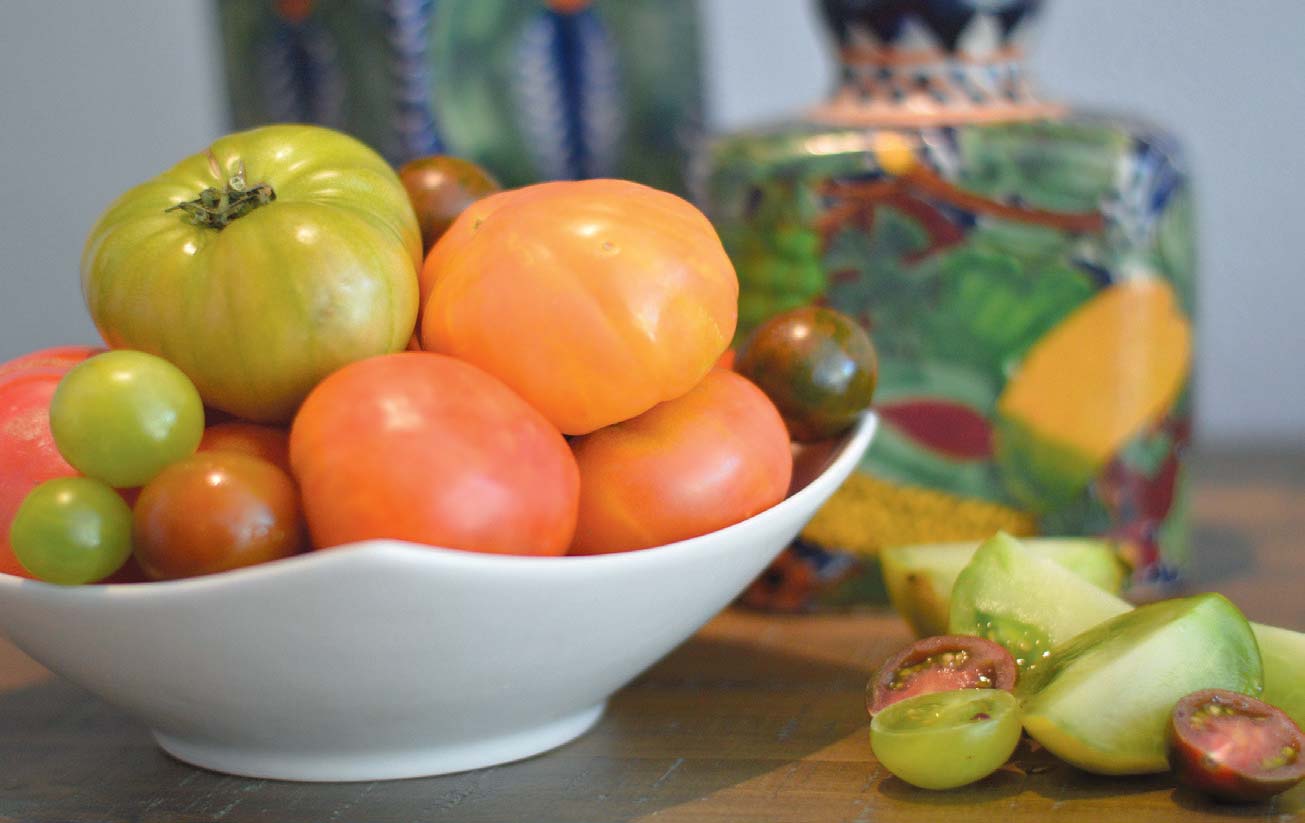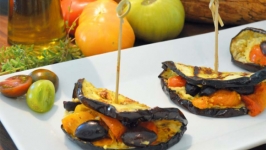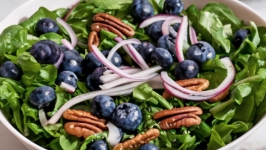IT'S HARD NOT TO LOVE THE 'LOVE APPLE'
The French call it pomme d’amour (love apple). The Italians call it pomi d’oro (apple of gold.) But we can thank the Aztecs for the name most associated with this prolific garden crop. Tomatoes, or tomatls as the Aztecs referred to them, are a garden favorite that allow us to get that last delicious bite of summer through a variety of preparations.
Botanically speaking, the tomato is a fruit (actually a berry). In 1887, U.S. tariff laws imposed a duty on vegetables, but not on fruits. This meant the status of tomatoes become a matter of legal importance. The U.S. Supreme Court ruled in the case of Nix v. Hedden that tomatoes were to be considered vegetables, based on the popular definition that classifies vegetables by use. Tomatoes were most often served with dinner and not as a dessert. However, the courts did not reclassify the tomato botanically.
As for varieties, there’s a lot to pick from. Visit a local farmers market and you’ll find names like Black Krim, Cherokee Purple, Yellow Ox Heart, Brandywine and Green Zebra. One of my personal favorites is the Blondkopfchen, a variety of tiny yellow tomatoes that grow in large clusters with a super sweet taste. They’re delicious just to pop whole in your mouth, plus the name is just fun to say.
Heirloom varieties have become popular in the past years, although certain liberties have been taken with the use of the term for commercial purposes. Technically, an heirloom is a variety that has been passed down through several generations because of its valued characteristics. Seeds for heirloom vegetables have been nurtured through open pollination. The amount of years needed to designate a vegetable an heirloom, however, is debatable. The general consensus is that the plant needs to have originated before 1951 (when hybridization became popular) with many varieties being 50 to over 100 years.
With the tomato harvest in full swing, it’s time to start cooking them up. Before you start picking, washing and chopping, make sure you know a few tomato cooking basics.
HOW DO DIFFERENT TOMATOES VARY IN FLAVOR?
A tomato’s flavor comes from a balance of acidity and sugar. If you’ve grown your share of tomatoes, you know that some are sweet and some fall more on the tart spectrum of flavor. A tomato high in sugar and low in acids will have a sweet taste. Ones that are in the 50/50 spectrum tend to be on the bland side. A tomato with high acidity will have a bit of tartness. The color of a tomato often helps provide some insight to its flavor Red tomatoes are usually higher in acidity. Larger varieties are terrific in recipes that need juice like a sauce or soup. A pink tomato tends to be a little sweeter and milder in flavor. Yellow or orange tomatoes deliver a low to medium acid level. Their flavor can almost be candy-like because of their sweetness. Use them right off the vine in salads and salsas. And the purple, almost black, tomatoes? These gems tend to have a higher acid level along the lines of a red tomato coupled with a rich and somewhat smoky flavor. Slices are eye-catching on a plate, with certain varieties highly prized. In Russia, a variety known as the Black Prince is pressed to make an oil-like product sold as Black Prince Tomato oil.
CHECK OUT YOUR TOMATO’S PARTNER
Although tomatoes go with many ingredients, there are a few pairings that should be avoided. The high acid content of tomatoes slows down the cooking process when blended with some ingredients. Dried beans added to a tomato dish will take up to 20 percent more cooking time.
Avoid aluminum pots, pans and utensils when working with tomatoes. The acidity in tomatoes can create a chemical reaction that can turn the cooked tomatoes bitter, fade their color and sometimes absorb an aluminum favor. The acid can also pit aluminum cookware.
PICKING AND STORING
Pick those plants from the top down. Those tomatoes closer to the sun will be the first to ripen. Tomatoes, like most vegetables and fruit, like to breathe. Place picked tomatoes in a low basket or wooden crate, steam side down. This will prevent bruises and premature rotting. And like avocados and bananas, underripe tomatoes can be placed in paper bags to ripen. Try your best to use up those super ripe tomatoes soon after picking.
A ROUND-UP OF FAVORITE RECIPES
Our area is blessed with the perfect conditions to grow basketfuls of tomatoes. Though most of your harvest may end up in salsa or marinara sauce, this year try your hand at some more unusual tomato recipes. To get you started, I’m sharing some of my favorite recipes that use tomatoes.
My heirloom tomato quiche is perfect for breakfast, lunch or dinner. The quiche is not only delicious, it also provides the perfect showcase to highlight the striking colors of the heirlooms. Place the tomato slices between paper towels to soak up excess liquid. Sprinkling a thin layer of bread crumbs on the bottom of the unbaked crust will help keep the finished crust crisp.
Give your grill an autumn workout by roasting cherry or teardrop tomatoes in a cast-iron skillet. Roast just until the tomatoes blister and have a slight char. Toss in olive oil, balsamic vinegar and fresh basil. Scatter the tomatoes on top of toasted French bread, then top with fresh mozzarella for a late harvest caprese sandwich.
Make an easy tomato confit by slow-roasting tomatoes in a lower heat oven. This cooking method brings out the flavor and sweetness from any tomato, even those that are less-than-ideal. Use the confit in everything from a quick edition to your morning eggs to a creamy roasted tomato risotto. One of my favorite ways to enjoy tomato confit is in a grilled eggplant and hummus wrap. It’s healthy, vegetarian and gluten-free.
And finally, why not enjoy a few tomatoes … in dessert? Caramelize Roma or cherry tomatoes in a sugar glaze and toss with fresh raspberries. Purchased puff pastry makes an easy base for the tart. Finish off this unusual desert with a scoop of vanilla bean ice cream or freshly whipped cream.










